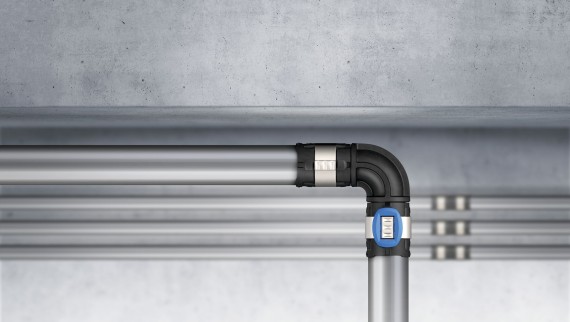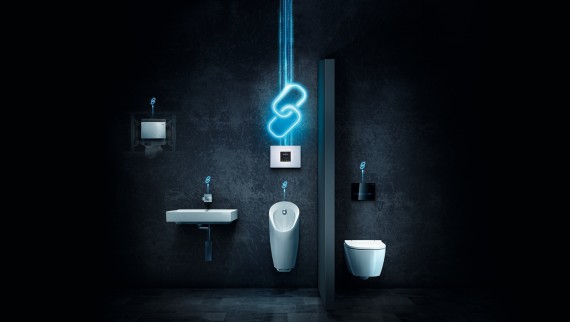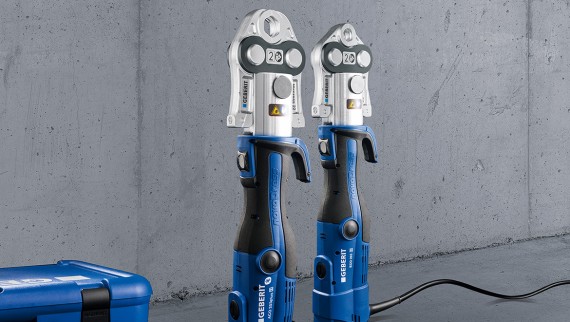Geberit Hygiene System for drinking water installations
In residential buildings such as holiday homes, as well as in public buildings and hotels, drinking water pipes often go unused for extended periods. To prevent stagnation in the pipes and the associated risk of legionella or other bacterial growth, regular water replacement is essential. This can be carried out manually by a facility manager or, more efficiently, via an automated system.
With the Geberit Hygiene System, Geberit offers a comprehensive solution for automatic, demand-driven and regular water replacement. This allows professionals to develop bespoke solutions to maintain drinking water quality in any installation. The Hygiene System enables the facility operator to comply with local drinking water regulations.
The Geberit Hygiene System includes hydraulically-optimised piping systems, practical piping components, hygiene flush units, sensors and intelligent tools for controlling and connecting sanitary appliances during operation.

Why choose the Geberit Hygiene System?

Comprehensive system for drinking water hygiene
System with all necessary components for effective drinking water management.

Safe drinking water management
Automatic error messages and warnings let users know whether the facility is running safely.

Verifiable flushing
Regular flushing can be verified with the flushing event logs.

Flexible options
A variety of flush units and flush logics fulfil different requirements.

Centralised operation with Geberit Connect
Operate, set and download logs for connected end devices from a central interface.

Low water consumption
Intelligent flushing programmes and the use of GEBUS sensors enable targeted and needs-based flushing of the facility.

Extended selection of flushing programmes
Compared to standalone devices, Geberit Connect supports time-controlled, difference and temperature-based flushing.

Combination of flushing programmes
Geberit Connect allows multiple flushing programmes to be programmed simultaneously, ensuring that several criteria are met.
All hygiene flush units at a glance
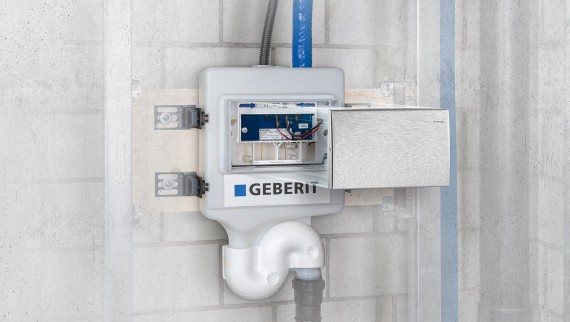
Geberit HS10, HS30 and HS50 hygiene flush units
A hygiene flush unit that can be flexibly installed at any necessary position and can also be used for large flush volumes.

Geberit HS05 hygiene flush unit
A hygiene flush unit module that can be retrofitted in a Sigma concealed cistern.
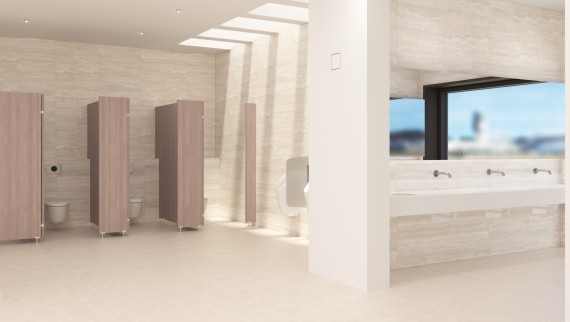
Control electronics with interval flush mode
In some cases, simple solutions for automatic flushes are all that is required. The additional option of programming interval flushes is available in many Geberit washbasin taps, as well as urinal and WC flush controls.
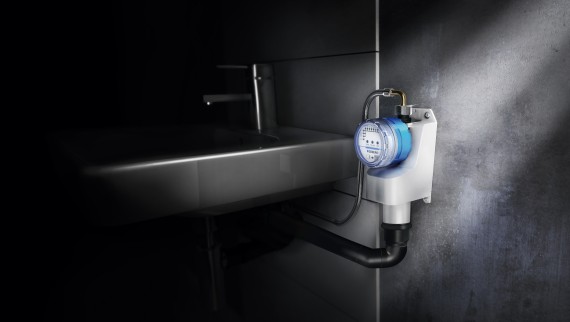
Geberit HS01 hygiene flush unit
If pipes are no longer in use and drinking water is stagnating there, the Geberit HS01 hygiene flush unit can be used until the unused pipes are removed.
Comprehensive system for drinking water hygiene Thanks to multistage hygiene flush management
Ensuring proper drinking water hygiene requires both regular rinsing of the pipes and adherence to the specified temperature ranges.
This is where a multistage hygiene flush management system tailored to individual needs offers an efficient and resource-saving solution.
- Level 1: Correct piping: optimised pipe installation
- Level 2: Regular flushing: additional hygiene flush units for automated water replacement
- Level 3: Controlled flushing: use of sensors for targeted water replacement
- Level 4: Intelligently connected: Centralised hygiene management with Geberit Connect
Level 1
Correct piping thanks to optimised pipe installation
Optimising the drinking water installation ensures regular water replacement during continuous use.
Advantages of optimised pipe installations:
- Low pipe contents
- Short draw-off times
- Low risk of stagnation
- Reduced thermal load on the cold-water pipe
The following measures are intended to achieve an efficient pipe installation:
- Smallest possible pipe diameter
- Series-connected pipe installation on the floor with a frequently used consumer at the end of the pipe
- Thermally decoupled pipe layout on the floor
- Separate boxes for hot water (PWH, PWH-C) and cold water (PWC)
- Proper insulation of the pipelines (PWH, PWH-C, PWC)
Various Geberit piping systems are available for the pipe installation.
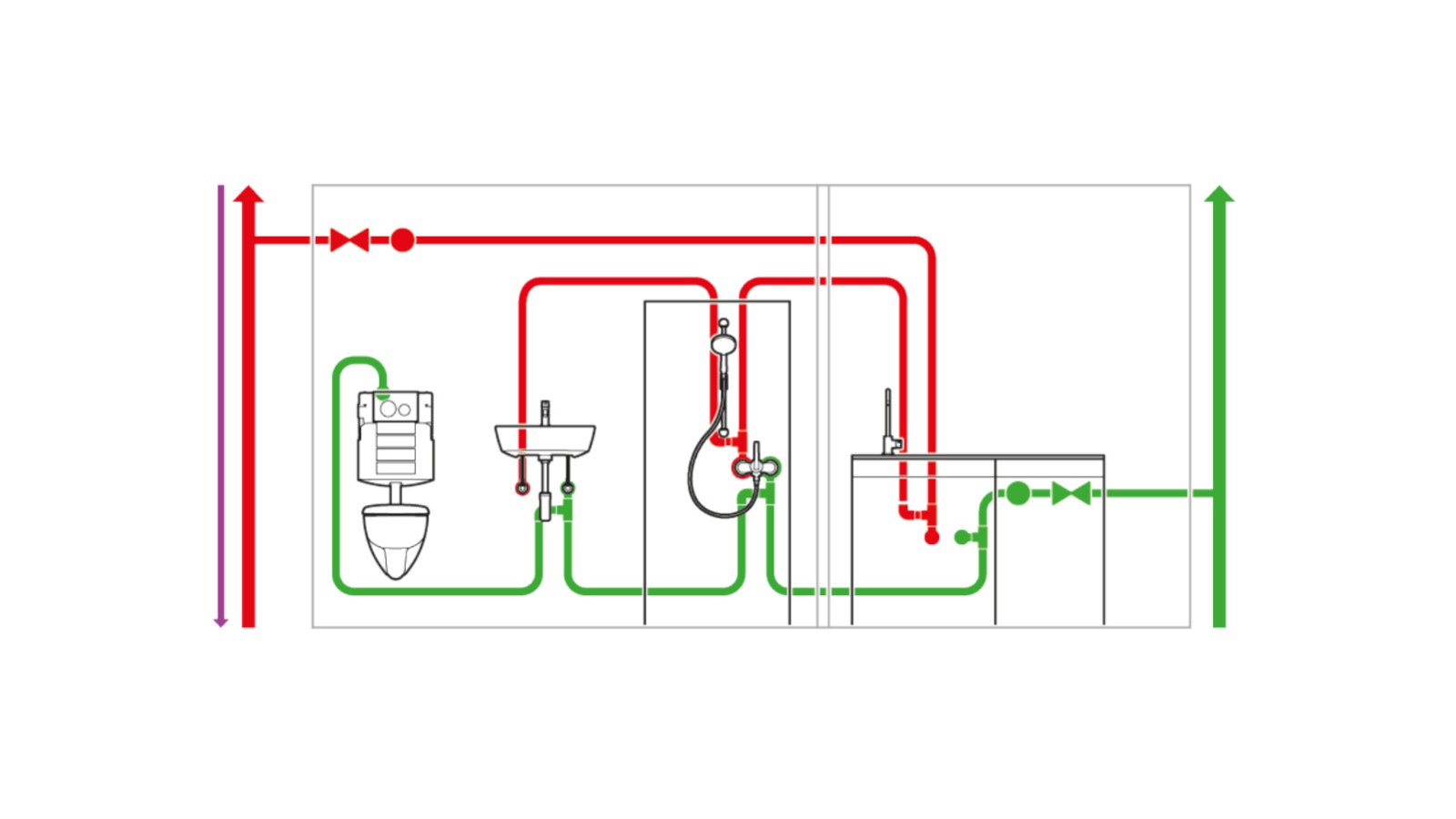
Level 2
Regular flushing with additional hygiene flush units
In cases of irregular use, hygiene flush units should be installed alongside an optimised pipe installation to automate regular water replacement.
Advantages of using additional hygiene flush units:
- Customisable flushing programmes
- Ability to also flush hot water
- Configuration, function test, logging and maintenance via theGeberit Control app
- Planning flexibility afforded by different solutions for automated water replacement
- Connection to building automation via Digital I/O – Geberit offers various hygiene flush units to suit different requirements.
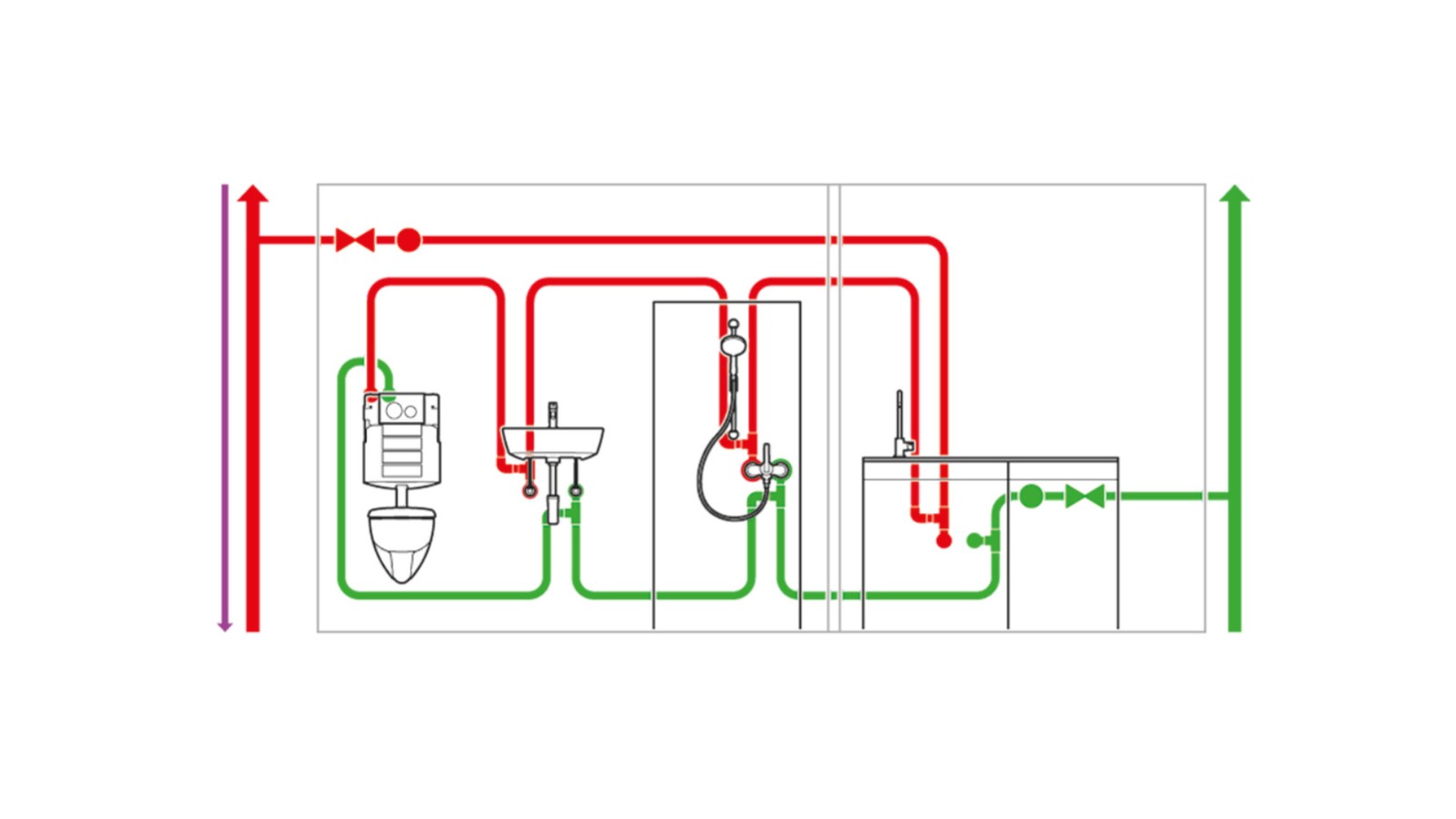
Level 3
Controlled flushing through the use of sensors
For higher requirements or when temperature and flow rate monitoring is essential, sensors can be used for targeted water replacement.
Advantages of using sensors:
- Temperature-controlled flushing programme
- Water replacement ensured by means of volume measurement
- Ability to record the measured water volume
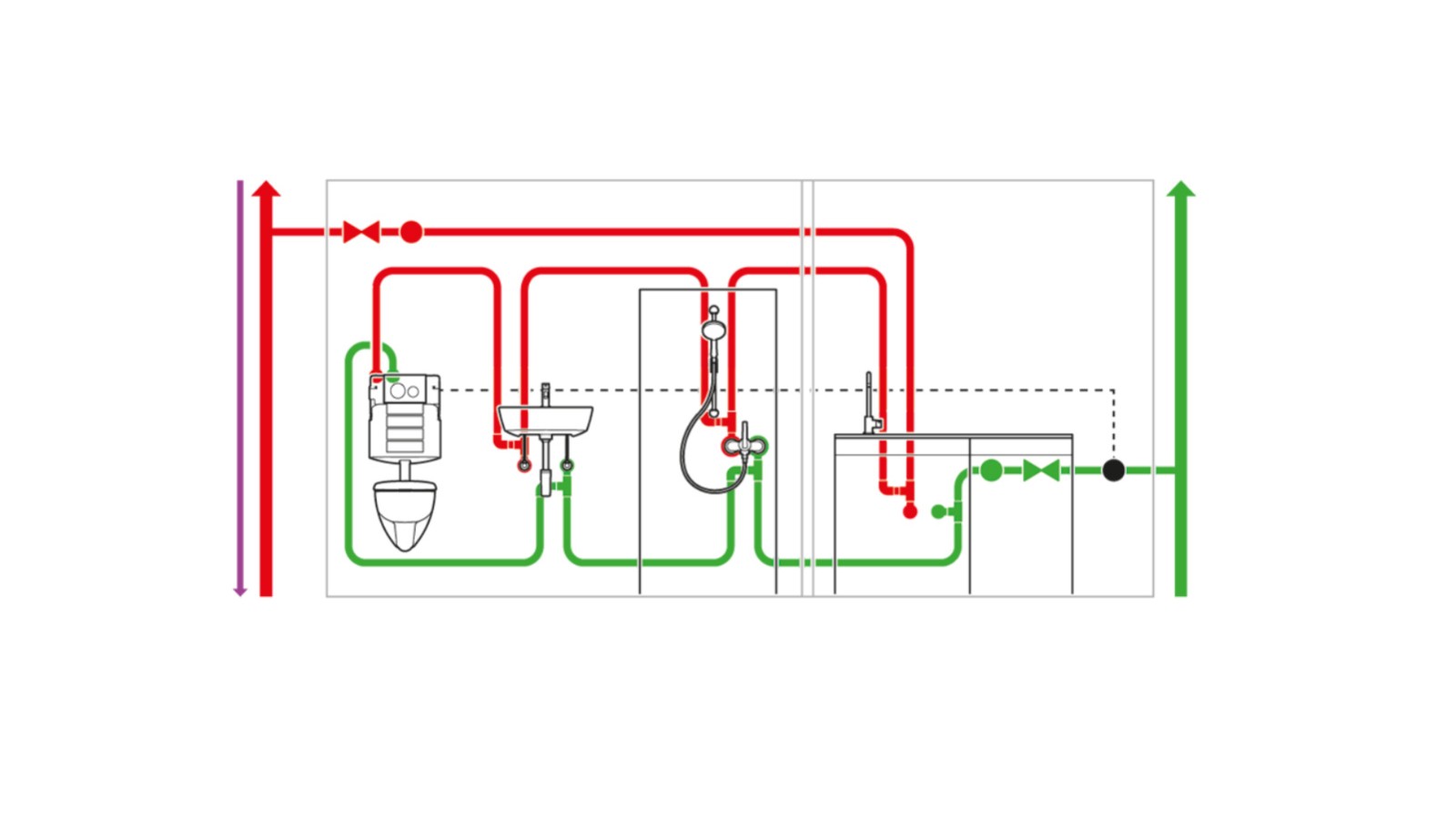
Level 4
Intelligently connected thanks to connectivity with Geberit Connect
The connected system combines all information flows and enables hygiene management that is optimised for the building, its use and the environmental parameters.
This offers advantages in terms of centralised and secure operation, optimised water consumption, and flexibility in planning and operation.
High level of safety:
- Documentation of system operation
- Regular flushing for irregular use
- Centralised operation and documentation
- Logging of water temperatures and flow rates using Geberit sensors for GEBUS

Optimised use and efficient operation:
- Optimal use of drinking water through sensor technology and usage data
- No longer any need for manual flushes to ensure water replacement
- Simplified facility management
- The high variability of the possible flushing programmes can be ideally adapted to the specific requirements of the building.
- Logging of temperatures and volumetric flow rates
Flexible and future-proof system:
- Ability to expand the system at any time
- Flexible positioning of the sensors
- Option for integration into a building automation system via BACnet/IP
- Possibility to integrate urinals, washbasin taps, WC flush controls and hygiene flush units
Geberit Connect Technical platform for connecting sanitary appliances
Geberit Connect is a technology platform that includes the software and components required to connect sanitary appliances.
Connecting hygiene flush units, taps, urinals and WCs opens up innovative possibilities that really streamline the operation of a building’s drinking water system.
All planning, installation, commissioning and operation details can be found in the Geberit Connect system manual.
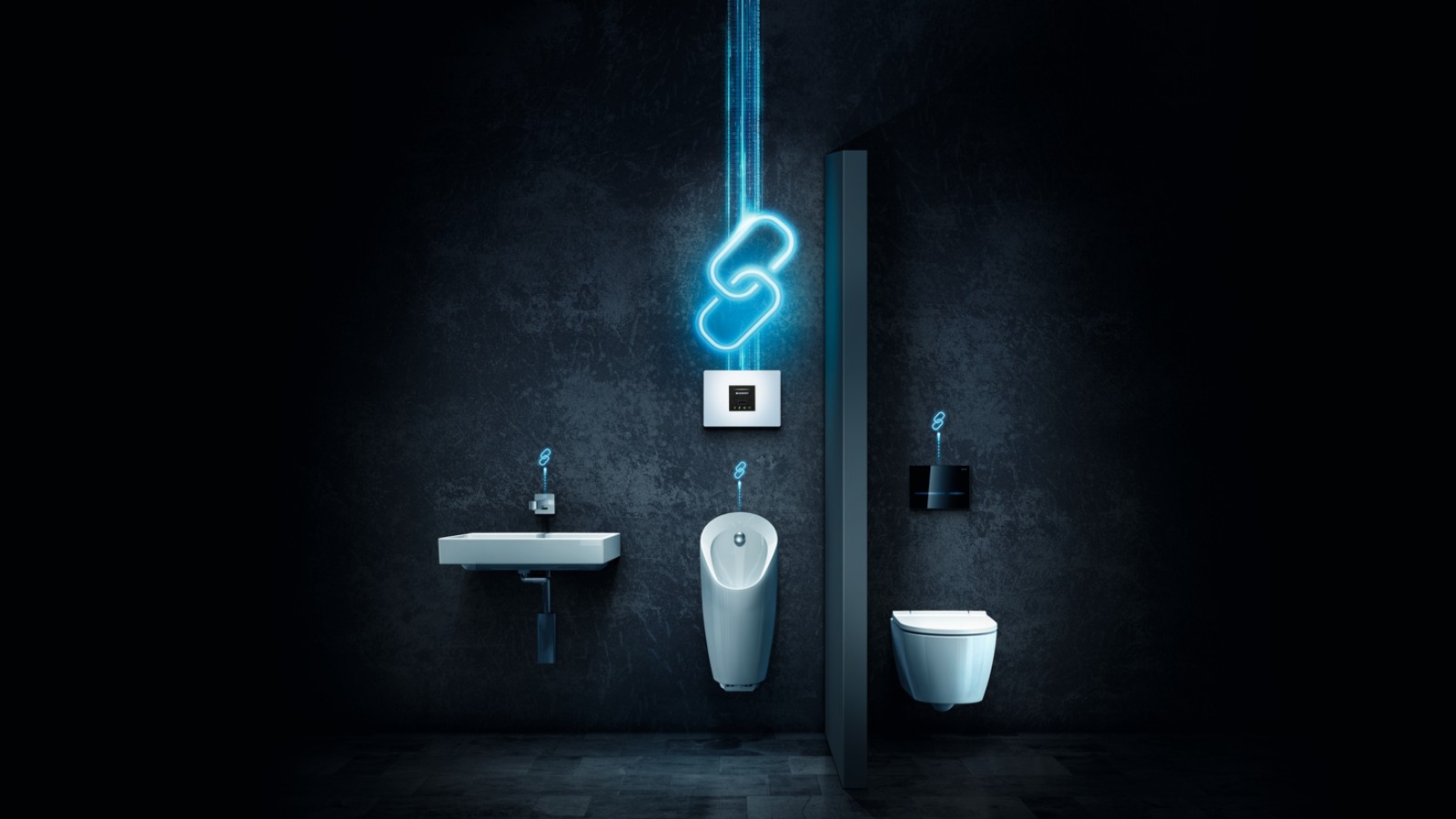
Flushing programmes Solutions for every operating mode and requirement
The right flushing programme ensures that all requirements for optimal drinking water hygiene are met. A hygiene system can be operated in two ways: as a compact, analogue solution or as part of a fully connected system, such as a building automation setup.
Depending on whether a drinking water installation is connected or non-connected, the following flushing programmes are available for different Geberit hygiene flush units:
Time flush
A flush is actuated at a defined time on a weekday. The flush volume, time and day of the week can all be selected.
Example application: A company canteen would like to offer fresh water at the point of use at a certain time.
Benefit: Customers have access to fresh water at the point of use at a specific time.
Additional benefits in a connected system: Simultaneously actuating multiple flushes allows for a turbulent flushing out of the pipework at a defined time.

Interval flush without usage detection
A flush is actuated after a defined interval has elapsed. The flush volume, start time and interval can all be selected.
Applications: The interval flush offers flushing at fixed intervals.
Benefit: Consumers have access to fresh water at the point of use at a specific time.

Interval flush with usage detection unit
A flush is actuated after a defined interval has elapsed, the interval being reset after every use. The flush volume, start time and interval can all be selected.
Applications: For buildings with irregular or seasonal use, such as hotels and holiday homes.
Benefit: In buildings with irregular use, water is only replaced when necessary and water consumption is optimised.

Temperature flush
A flush is actuated when a start temperature is reached and ends when a stop temperature is reached. Start/stop temperature and maximum flush volume can be selected.
Applications: In buildings with extensive drinking water installations where significant heating of the cold water is expected, such as hospitals or production facilities.
Benefits:
- Water temperatures are logged to provide security for the system operator
- Minimum temperatures are ensured in hot water supplies
- Temperatures are lowered in heated cold water supplies
Additional benefits in a connected system: Flexible positioning of the GEBUS temperature sensors in the drinking water installation.
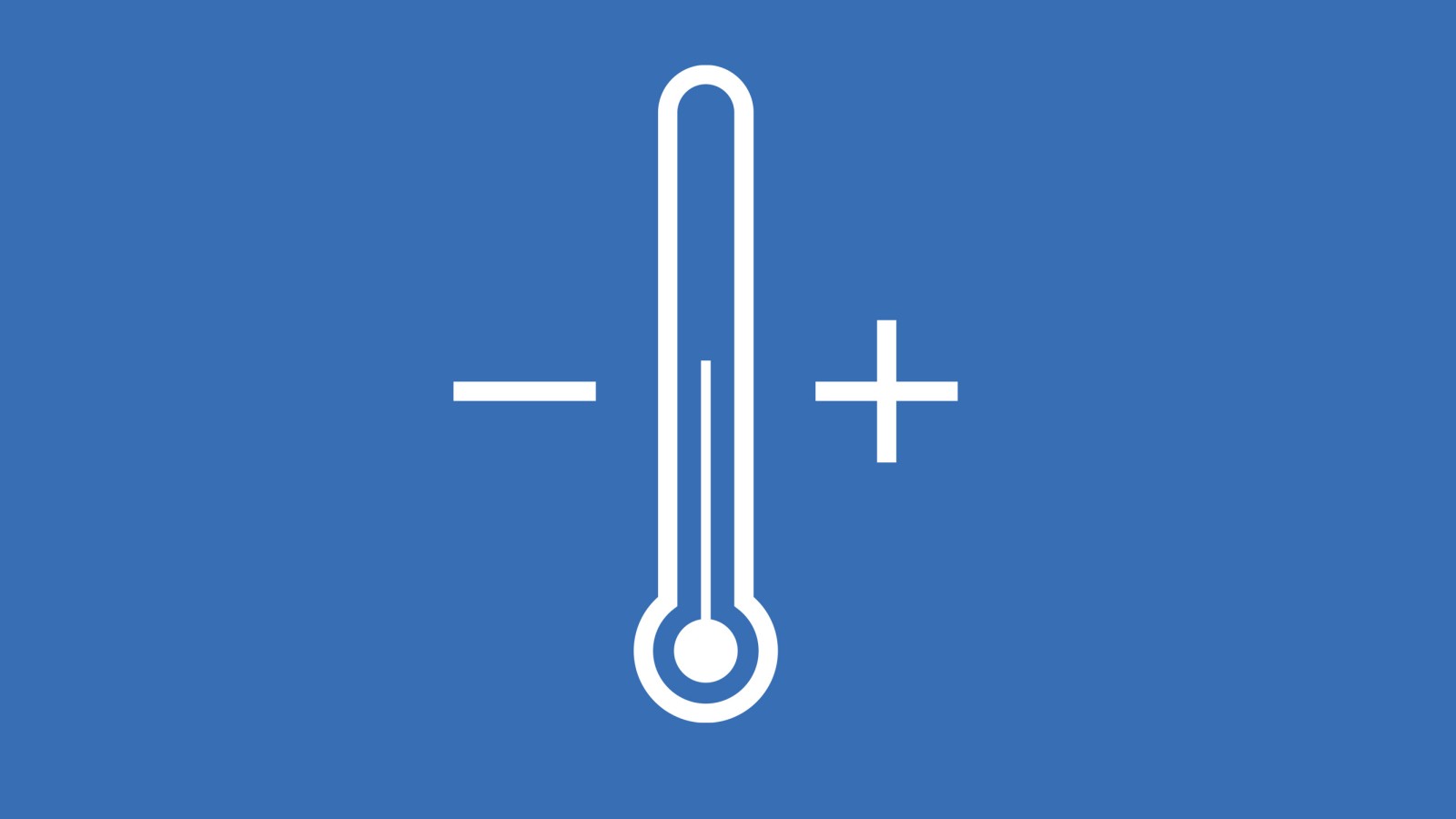
Difference flush with usage detection unit
A flush is actuated after a defined interval has elapsed. The water volume recorded at the points of use is taken into account to optimise water consumption. The nominal volume and interval can be selected.
Applications: In sanitary installations such as sports centres, the use of different outlet taps is taken into account and consumption-optimised flushing is enabled.
Benefit: Lower water consumption, as the facility is only flushed when not in use.
Note: When planning, attention must be paid to points of use with integrated usage detection.

Difference flush with temperature and volumetric flow rate sensor for GEBUS
This flushing programme is only possible in a connected system.
A flush is actuated after a defined interval has elapsed. The water volume measured by the sensor for GEBUS is taken into account and deducted from the defined nominal consumption. This enables optimised water consumption. The nominal volume and interval can be selected.
This function also requires the Geberit temperature and volumetric flow rate sensor for GEBUS.
Application: Ideal for in-row installations where not all elements are connected and a minimum volume must be flushed within a specified period.
Benefit: The water consumption of a given zone can be defined and compared with the actual use. This makes it possible to optimise water consumption.

Reference projects

Optimum drinking water hygiene despite irregular use
Nuremberg Messe uses Geberit Connect to manage its sanitary installations and ensure drinking water hygiene. It successfully handles the challenge of fluctuating visitor numbers and usage patterns.
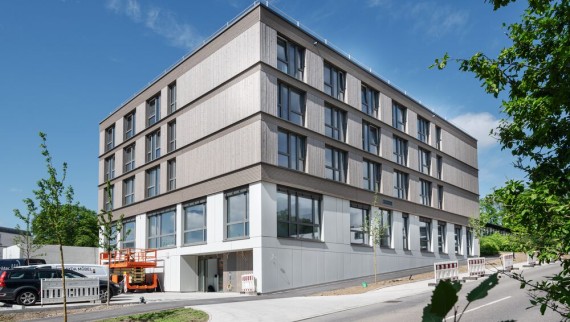
Centrally operated hygiene flush units for drinking water
At the Heidenheim dialysis centre, the individual hygiene flush units in both the apartments and the dialysis area have been connected using Geberit Connect. This facilitates centralised operation and reading out of the hygiene flush units.
Do you have any questions? We are happy to help you.
Our specialists advise planners, plumbers and other professionals on their projects. They will be happy to advise you on how to best master your current challenges with our products.
Plan drinking water installations effectively with Geberit ProPlanner
The free Geberit ProPlanner software also supports professionals with planning drinking water installations.
With the help of its ‘loop through’ setting, Geberit ProPlanner connects all objects selected by the sanitary engineer to this pipe routing. Hygiene flush units can be used flexibly in the planning process, and the corresponding sensors can be placed with the same level of freedom. Geberit ProPlanner provides users with a whole host of useful information and documents, including:
- Material list: a complete material list including all necessary fittings and connections.
- Hydraulic list: includes pressure losses and verifies proper operation. If existing limit values are exceeded or not met, an error message is generated and displayed in the schematic drawing so that corrections can be implemented with ease.
- Recommended settings: flush time and flush volume settings.
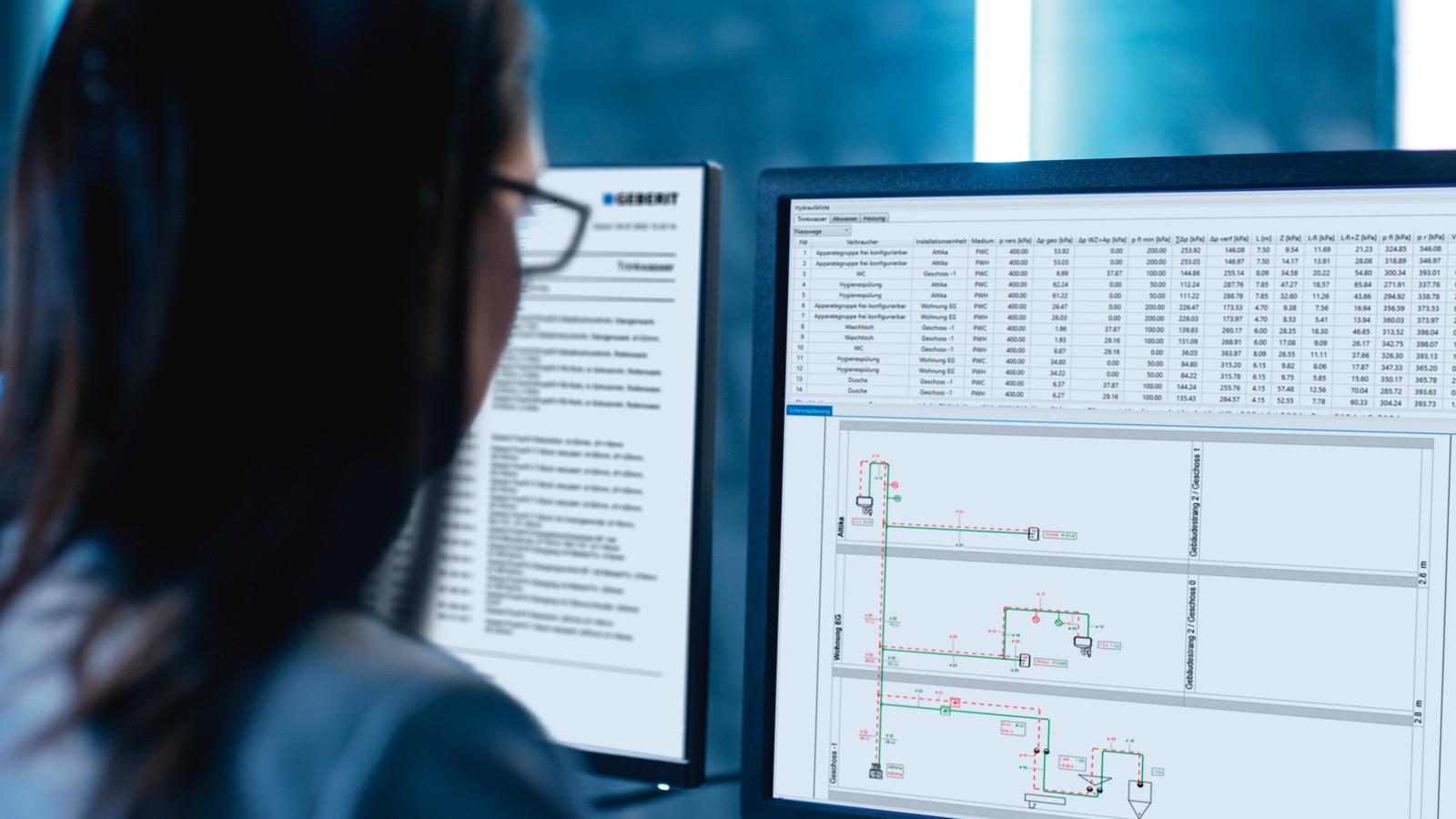
Other useful tools
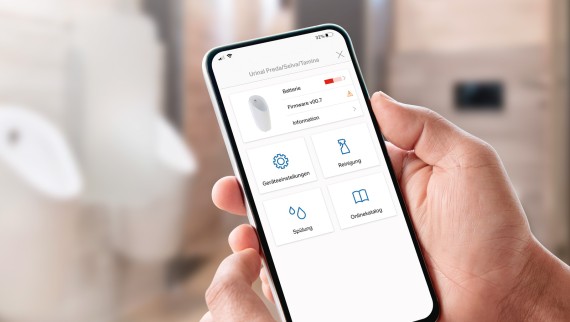
Geberit Control app
The Geberit Control app offers seamless control of Geberit WCs, urinals and washbasin taps. Hygiene flush settings can be easily configured and managed.
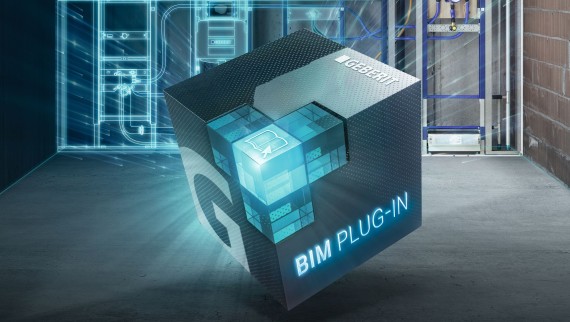
Geberit BIM Plug-in
The Geberit BIM Plug-in for Autodesk® Revit® combines all Geberit planning and calculation tools as well as access to BIM content in one application.
Frequently asked questions about hygiene flush units and drinking water installations
Which products offer automatic flushing programmes?
Geberit offers a wide range of products, including hygiene flush units, WC controls, taps and urinals, all of which support automatic flushing programmes. These can be identified by their compatibility with Geberit Control.
How are the hygiene flush units configured or read out?
Operation is incredibly simple via the Geberit Control app, which can be downloaded free of charge from the app stores.
What conditions allow bacteria to grow in drinking water systems?
Legionella and other bacteria thrive in drinking water systems when they have access to the right nutrients, the ideal temperature and sufficient time to grow. This is typically an issue when cold water pipes heat up and water remains stagnant in the pipes for extended periods. That’s why it’s essential to consider stagnation prevention right from the planning stage of drinking water installations.
